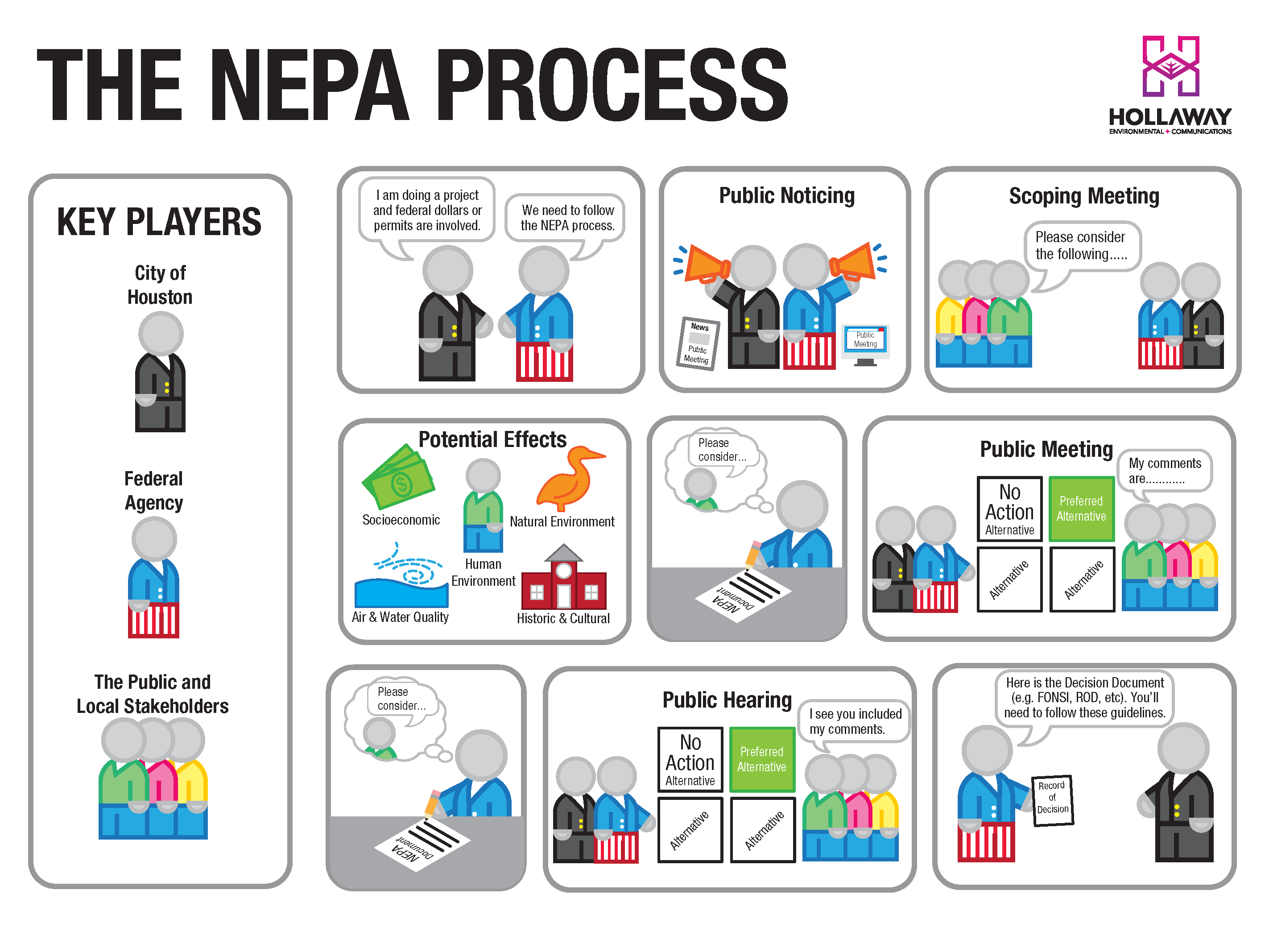
In the realm of environmental compliance, communication stands at the core of ensuring responsible decision-making — facilitating awareness, collaboration, policy development, and overall progress toward a more sustainable and resilient future. A cornerstone of this decision-making process is the National Environmental Policy Act (NEPA). Communication plays a pivotal role in shaping policies, fostering public involvement, and ultimately steering the course toward environmentally responsible actions.
Transparent Decision-Making
At the heart of the NEPA process is the commitment to transparent decision-making, and communication is critical in achieving this transparency. Agencies and decision-makers involved in the NEPA process must effectively communicate their actions, rationale, and potential environmental impacts to the public. This not only satisfies the legal requirements of NEPA but also ensures that the affected communities are well-informed and able to participate meaningfully in the decision-making process.
Public Involvement and Collaboration
NEPA emphasizes the importance of involving the public in the decision-making process. From local communities to advocacy groups, effective communication is vital for soliciting input, addressing concerns, and fostering collaboration. Clear communication channels facilitate a two-way dialogue, allowing the public to express their perspectives and contributing valuable insights to the decision-making process.

Moreover, NEPA mandates public participation in certain phases of Environmental Assessments and Environmental Impact Statements. Communication becomes a tool for inclusivity, ensuring that diverse voices are heard and considered in the formulation of environmental policies. Through public meetings, and the dissemination of informational materials, NEPA encourages a robust exchange of information between decision-makers and the public.

Interagency Cooperation
NEPA often involves multiple agencies working together to assess and address environmental impacts. Effective communication among these agencies is imperative to ensure a cohesive and comprehensive evaluation. Sharing data, coordinating efforts, and aligning goals require a seamless flow of information. When agencies communicate effectively, they can avoid duplication of efforts, streamline the NEPA process, and arrive at more informed and well-rounded decisions.
Mitigating Environmental Risks
Communication is not just about disseminating information. It's a proactive tool for mitigating environmental risks. NEPA requires thorough environmental impact assessments, and effective communication ensures that potential risks are identified, communicated to relevant parties, and addressed through appropriate mitigation measures. Whether it's potential habitat disruption or water quality concerns, clear communication is essential in devising strategies to safeguard the environment.
Compliance and Legal Requirements
In the NEPA process, adherence to legal requirements is paramount. Effective communication is the key to ensuring that all stakeholders understand and comply with the procedural and substantive aspects of NEPA. This includes timely notifications, clear documentation of environmental analyses, and transparent reporting of findings. Through precise communication, agencies can navigate the legal landscape and ensure that their actions align with the objectives of NEPA.
Ultimately, communication is not just a supplementary element; it is fundamental to the success of environmental policy. Whether it's fostering public involvement, promoting interagency cooperation, or mitigating environmental risks, effective communication is the catalyst that propels the NEPA process forward. By recognizing and embracing the vital role of communication, we can ensure that our environmental policies are not only legally compliant but also reflective of a genuine commitment to sustainable and responsible decision-making.
To learn more about Hollaway, our work, and how we can serve you, visit us at www.hollawayenv.com
